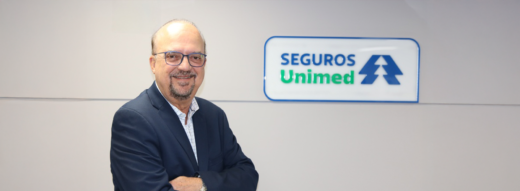By: Moses Ojeisekhoba, CEO Reinsurance Swiss Re
The devastation of a natural disaster knows no boundaries and obeys no laws. The only certainty we have from an earthquake or a hurricane is that what happens in the days immediately following can dramatically affect the longer-term course of recovery.
For developing economies one of the biggest risks is that a country already in crisis will lack the means to maintain vital services and plunge even deeper into a painful, protracted struggle to rebuild.
But it doesn’t have to be this way. The Caribbean Catastrophe Risk Insurance Facility (CCRIF) is paving the way to resilience, using parametric triggers for fast payouts that help maintain basic government functions and improve cash flows. The CCRIF is the first multi-country risk pool in the world and provides protection for 19 member governments. Payouts after hurricanes Maria and Irma were received in under 14 days. CCRIF and similar partnerships are helping close the global protection gap – the difference between total economic losses and insured losses.In the last 10 years, total economic losses outpaced insured losses by almost USD 150 billion annually. While the problem of underinsurance may seem daunting, it presents a compelling opportunity for our industry to make a difference in developed and emerging markets alike.
Consider that a third of vehicles on the road in Brazil lack motor insurance because mandatory coverage is limited to bodily injury liability. Brazilian agriculture is also largely uninsured, at around 90% – another alarming figure considering this sector is responsible for 20% of the Brazilian GDP.
Economies like Brazil’s are especially vulnerable because uninsured individuals often don’t have the reserve funds to repair or rebuild. The protection gap only widens as populations increase, people live longer, they accumulate more assets and trends like rapid urbanization concentrate more assets in areas prone to natural catastrophe. On top of this, climate change and the accompanying more frequent and severe events exacerbates the problem.
Human behavior also contributes to the protection gap. Many of Brazil’s consumers have never owned an insurance policy and don’t understand its value. Our industry can do a better job of anticipating and responding to basic human needs rather than marketing products that are too aspirational, complex and often deemed unnecessary.
The most vulnerable communities and their residents deserve improved access to insurance, so we should make it more affordable and educate them about its benefits.
Re/insurers, governments and multilateral organisations also need to develop stronger partnerships to widen the reach of insurance coverage. Fortunately, technology is a powerful ally to break down traditional barriers. Innovation can help increase affordability, raise product awareness, expand distribution and improve coverage through more accurate pricing of risk. At Swiss Re, we’re using technology to help our clients create innovative solutions:
- In China, we’ve enabled more than 1.5 million mobile devices to provide point-of-sale life insurance. Magnum, our automated Life & Health underwriting platform, helps our clients customise their own customer experience and tap into meaningful data insights that come from more than 12 million insurance applications processed each year.
- In Florida, we’re working with our clients to offer residents bundled water damage and flood coverage within their homeowner’s policy. This is an opportunity to capitalize on a sizeable risk pool by using a fully probabilistic flood model.
- In California, business owners are purchasing parametric insurance, so they can continue to meet their expenses and protect income in the event of an earthquake. A parametric policy is underwritten using only the applicant’s name, address and coverage limit. Policyholders get notified of payouts via their phone and funds are wired within 36 hours.
Technology can be a major enabler. The key for re/insurance is to unlock the potential. Insurance products can solve many challenges that come with growing economies when those products are easier to understand, easier to access and more affordable.
In today’s rapidly changing world, our industry’s ability to identify, quantify and manage risk will be tested at every turn. Extending insurance protection to more people and closing the protection gap will go a long way toward ensuring a more secure and resilient future for all, and there’s no better place to start than with Brazil’s motorists and farmers.
You may be interested

86% dos consumidores priorizam marcas que demonstram cuidado genuíno
Publicação - 6 de janeiro de 2026A empatia é um valor central para os consumidores brasileiros. De acordo com o estudo global "Addressing the Empathy Gap", realizado pela Zurich Insurance Group em parceria…

Odontoprev conquista mais de 12 premiações em 2025
Publicação - 6 de janeiro de 2026Com 38 anos de história, a Odontoprev chega ao final de 2025 com muitos motivos para comemorar e alguns deles estão relacionados com as premiações que a…

Prudential do Brasil anuncia renovação à tenista Bia Haddad
Publicação - 6 de janeiro de 2026A Prudential do Brasil anuncia a renovação do patrocínio à tenista brasileira Bia Haddad Maia, um dos maiores nomes do tênis feminino mundial. A parceria entre a…
Mais desta categoria

















